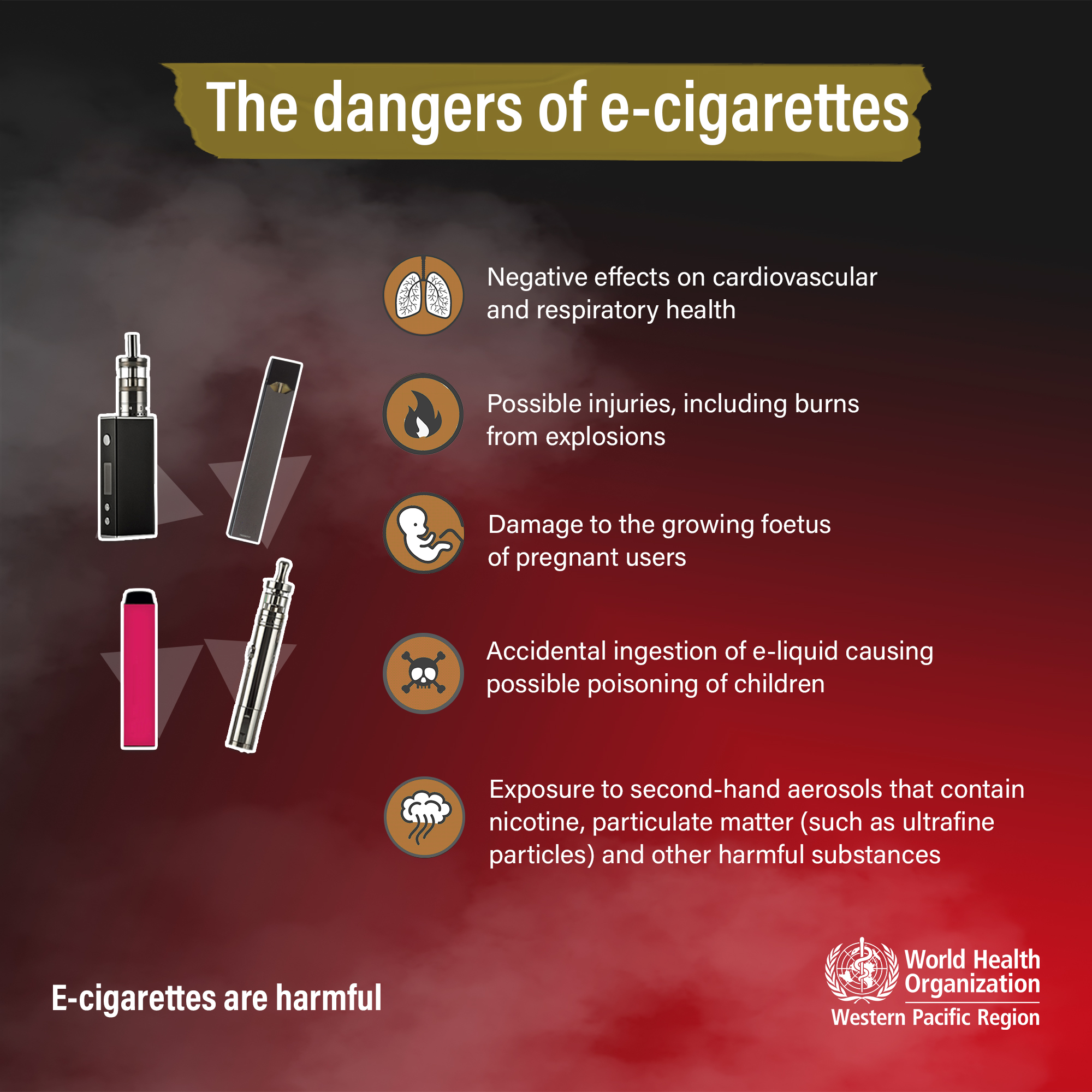Electronic cigarettes (e-cigarettes) are not harmless to others. The aerosol exhaled by users contains potentially harmful substances, impacting bystanders through passive exposure or secondhand aerosol.
Composition of Secondhand Aerosol
Unlike cigarette smoke, e-cigarette aerosol primarily consists of vaporized e-liquid components. However, this aerosol contains:

- Ultrafine particles (similar to PM2.5) that can be inhaled deep into the lungs.
- Nicotine in measurable concentrations, exposing bystanders and posing risks especially to children, pregnant women, and individuals with cardiovascular conditions.
- Flavoring chemicals, some associated with respiratory irritation or potential long-term toxicity (e.g., diacetyl linked to bronchiolitis obliterans).
- Trace metals like lead, nickel, chromium, and tin, originating from the device components.
- Volatile Organic Compounds (VOCs).
Established Health Risks for Bystanders
Scientific evidence demonstrates adverse effects from passive e-cigarette aerosol exposure:
- Respiratory Irritation: Increased reports of throat irritation, cough, and breathlessness among exposed individuals.
- Cardiovascular Effects: Evidence suggests short-term exposure can negatively impact blood vessel function (endothelial function) in nonsmokers, potentially increasing cardiovascular risk over time.
- Sensitivities and Allergies: Fragrances and chemicals in aerosols may trigger reactions in sensitive individuals.
- Particulate Matter Exposure: Inhaling ultrafine particles can contribute to lung inflammation and oxidative stress.
- Increased Indoor Air Pollution: E-cigarette use significantly elevates indoor particulate matter concentrations.
Specific Vulnerable Populations
Certain groups face heightened risks:
- Children: Exposure to nicotine during critical developmental stages harms brain development and increases susceptibility to respiratory infections and asthma exacerbation.
- Pregnant Women: Nicotine exposure can adversely affect fetal development.
- Individuals with Asthma or Respiratory Conditions: Aerosol constituents can trigger bronchoconstriction and worsen symptoms.
Conclusions and Recommendations
While secondhand e-cigarette aerosol typically contains fewer toxicants than tobacco smoke, it is not safe for bystanders. To mitigate risks to others:
- E-cigarette use should be prohibited in indoor public spaces and workplaces, similar to tobacco smoking bans.
- Use should be avoided in homes and cars, especially around children, pregnant women, and individuals with health vulnerabilities.
Treating e-cigarette use with the same caution as smoking regarding exposure to others is a prudent health measure.








